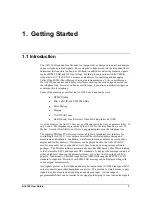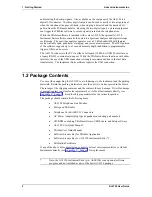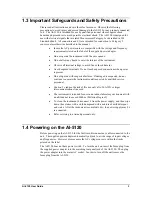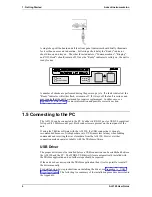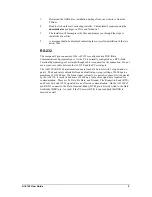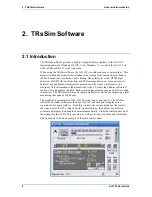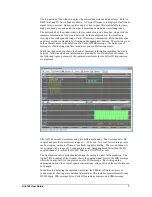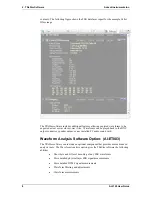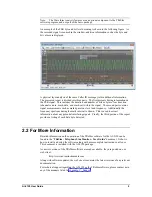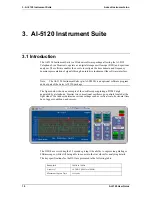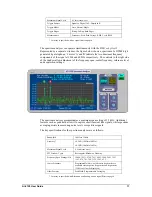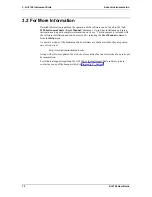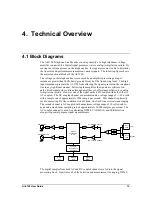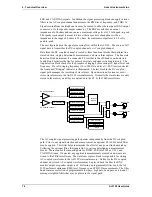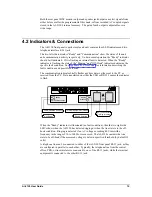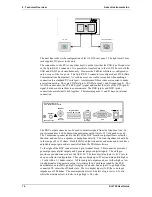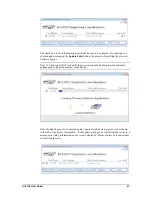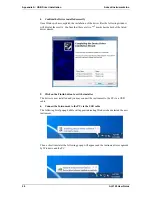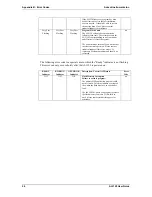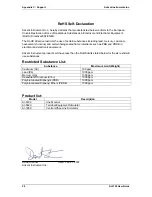
4. Technical Overview
Advent Instruments Inc.
FSK, and CAS/DTAS signals. In addition the signal processing block can apply various
filters to the AC coupled channel and measure the RMS level, frequency, and THD+N.
Signals sensed from the telephone line may be routed to either the rear panel BNC output
connector, or to the speaker output connector. The BNC monitor has an output
impedance of 600 ohms and can source a maximum voltage level of 5 volts peak-to-peak.
The speaker jack output is meant to drive either a speaker or headphone with an
impedance in the range of 8 ohms to 32 ohms. Its maximum output level is 2.8 volts
peak-to-peak.
The next figure depicts the signal processing flow within the AI-5120. The source of all
signal data is from either the DC coupled channel or AC coupled channel.
Data from the DC coupled channel is routed to three functional blocks that perform line
state detection, ringing detection & measurement, and wave form capture. The line state
detection block determines if a connected TE is either in the off-hook or on-hook state.
In addition it monitors the line for polarity reversals and open switching intervals. The
ring detection block checks for the presence of ringing by measuring AC signal level and
frequency. If a valid ringing frequency (10 to 100 Hz) and level (> 40 Vrms) is detected,
the front panel "Ringing" indicator is illuminated. The last block in the DC coupled
signal path manages the recording of waveforms. Upon detection of various events it
stores waveforms into the AI-5120's internal memory. Normally the waveforms are only
stored in the memory until they are uploaded to the PC by the TRsSim software.
Line State Detection
Internal
Memory
BNC Output
Prog. Filters
RMS Level
Freq. Counter
THD+N
DC Coupled Channel
Ring Det. & Meas.
Waveform Capture
DTMF Det. & Meas.
FSK Det. & Meas.
50 / 60 Hz Notch
Waveform Capture
Speaker Output
AC Coupled Channel
CAS/DTAS Detect
The AC coupled signal processing path operates independently from the DC coupled
path. Prior to any signal detection and measurement, an optional 50 / 60 Hz notch filter
may be applied. This filter helps to minimize the effect of any power line hum pickup.
Following the optional filter, the signals flow to various detection and measurement
blocks. These monitor the incoming data for DTMF, FSK (Bell 202 or V.23), and
CAS/DTAS tones. If detected, any applicable measurements are made and events are
issued to the TRsSim software. The waveform capture block is responsible for storing
AC coupled waveforms in the AI-5120's internal memory. Unlike for the DC coupled
channel, any stored AC coupled waveforms may be played back to either the BNC
monitor output or speaker output jack. Following a programmable filter bank, the AI-
5120 performs continuous RMS level, frequency, and THD+N measurements. The filter
bank contains a selection of programmable low pass, high pass, band pass, notch, and C-
message weighted filters that may be placed in the signal path.
14
AI-5120 User Guide


